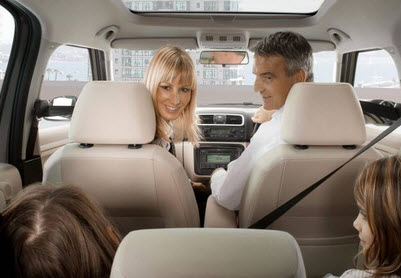3 Safety Features To Look For When Buying A Family Car
There’s no doubt that a family car carries especially precious cargo. It’s part of the reason why manufacturers are always improving safety features, particularly in models that are popular with families.
For those buying a family car—whether brand new from the dealership or second hand through online listing sites such as Boost Classifieds—these three features are worth noting as they are designed to save lives and significantly improve safety while on the roads.
ABS braking systems
ABS braking systems (anti-locking brake systems) prevent wheels from locking during a sudden braking event, helping to assist the driver to be able to steer away from any potential hazards and retain control. Newer vehicles may also be fitted with ABS brake assist, an add-on feature that is able to detect an emergency braking motion, providing additional braking power that may not be applied by a foot alone. This helps to remove problems arising from braking too late or not hard enough. An ABS system can be a major factor in helping avoid a crash by increasing control, or it may reduce the seriousness of a crash by helping vastly reduce impact speeds.
Passenger air bags
Airbags have been included as standard on passenger cars since 1998. Since then, an increasing number of passenger vehicles also include front and rear airbags to soften any impact passengers and drivers experience in the event of a collision. Some vehicles are also fitted with side airbags to provide protection for the body instead of the head. It’s important to note that while airbags save lives during a collision, they can also cause injury for small children. That’s why it’s recommended that children under 12 never sit in the front seat of a car.
Traction and electronic stability control
Traction control uses an electronically controlled system to limit the amount of wheel spin by applying temporary braking action to spinning wheels. They also limit the amount of slipping drive wheels undertake when heavy acceleration is necessary. Some systems only work at low speeds, while others will automatically adjust to provide the necessary power at all speeds. Traction control is especially useful during wet and icy conditions, where gaining traction to propel the car forward can be difficult. A traction control system helps to assist road safety by helping a car accelerate smoothly on slippery surfaces and plays an important role in keeping the car stable.
Electronic stability control (ECS) takes this a step further by detecting a loss of steering control through sensors that automatically apply braking power to an affected wheel. ECS can be useful to correct oversteering or understeering as well providing a stabilising force to the car to avoid fishtailing. Most cars with EBS will already have ABS and also some form of traction control. Depending on the make of the vehicle, ECS may be called different things, including vehicle stability control (VSC) or dynamic stability control (DSC).
These three safety features are worth considering when buying a family car; however, many others exist, including safety locks and in-built child harnesses. Crash ratings for different models of cars are also available, and they are worth checking out to allow you to compare how different vehicles stand up against each other in the event of a road accident.






No Comment